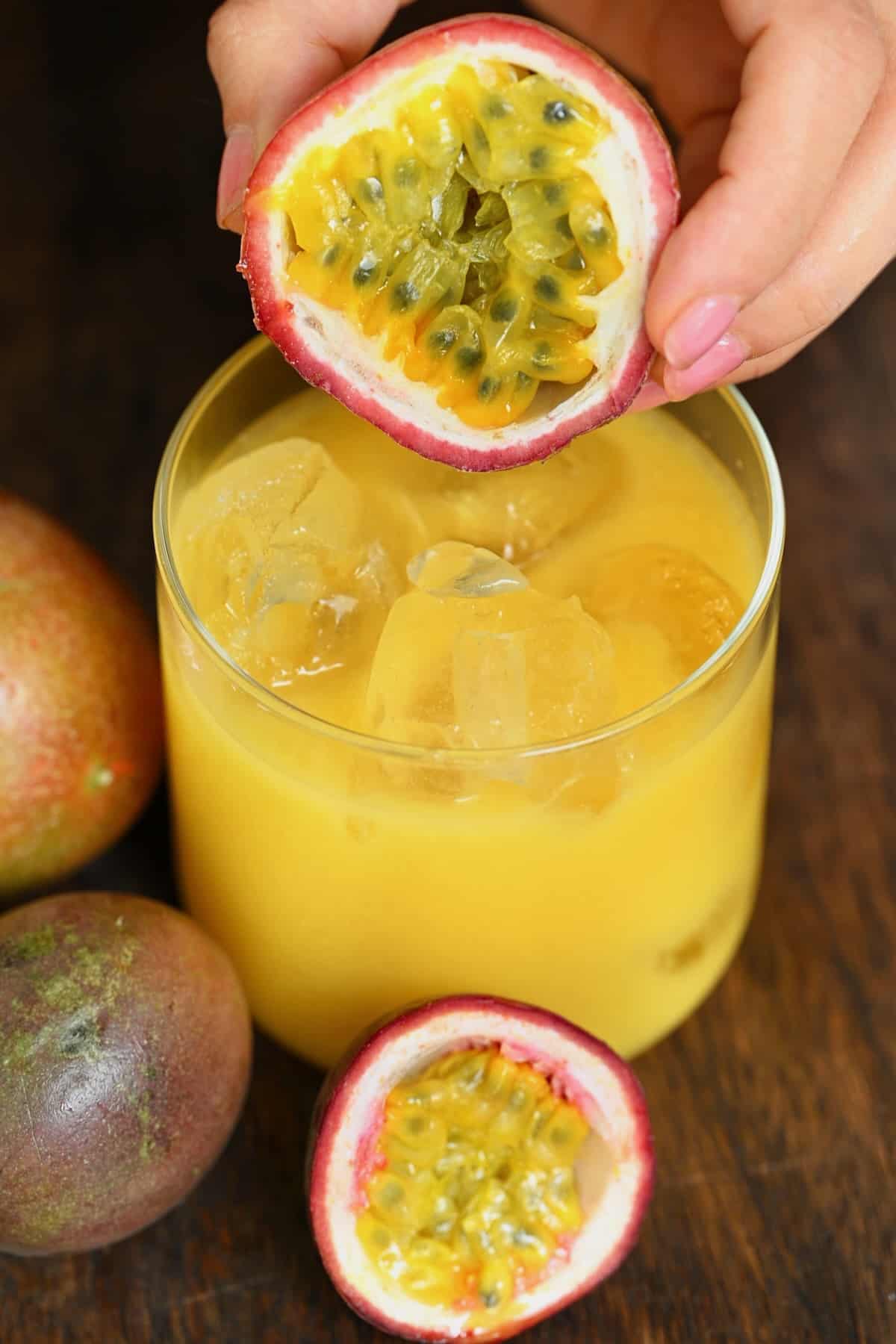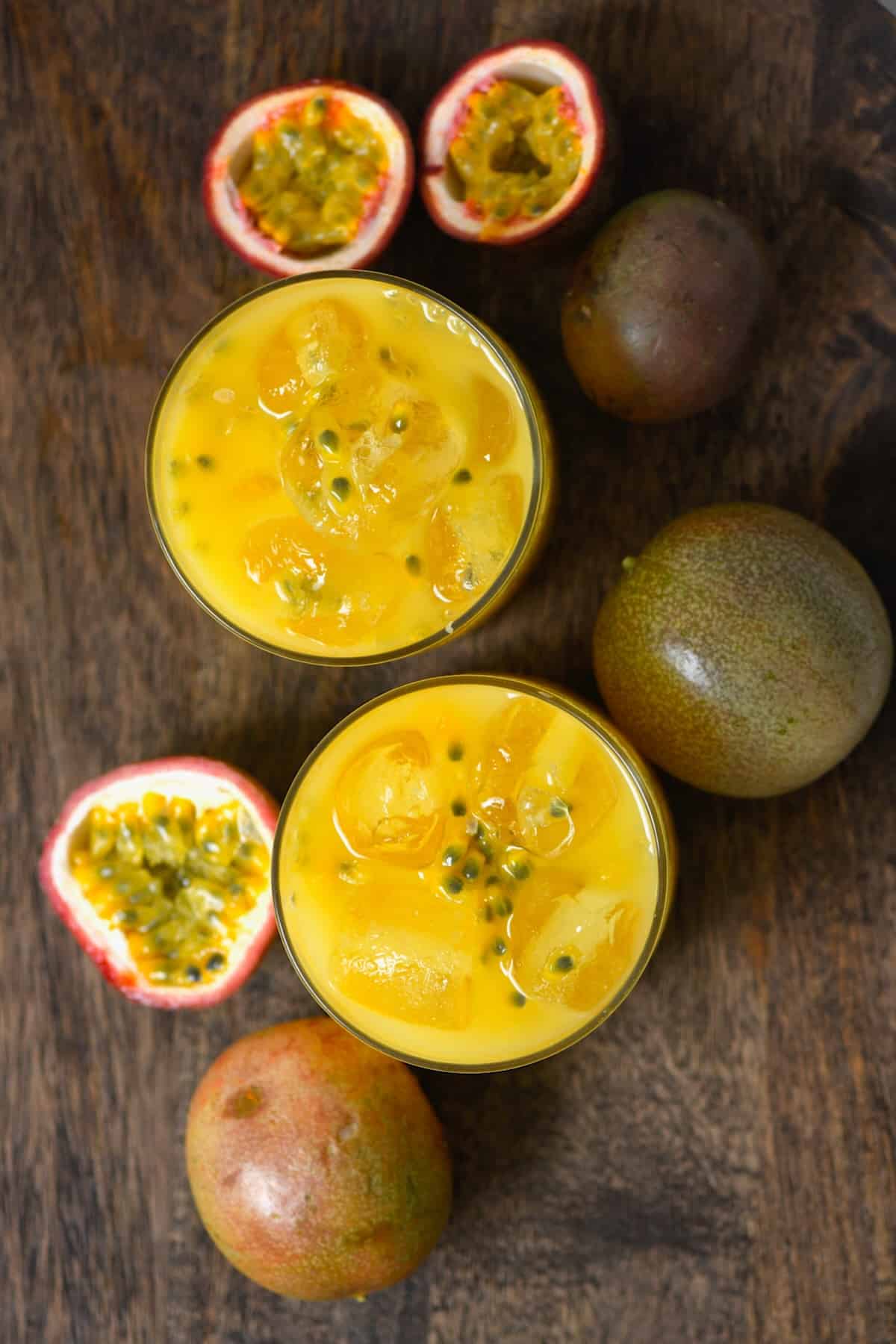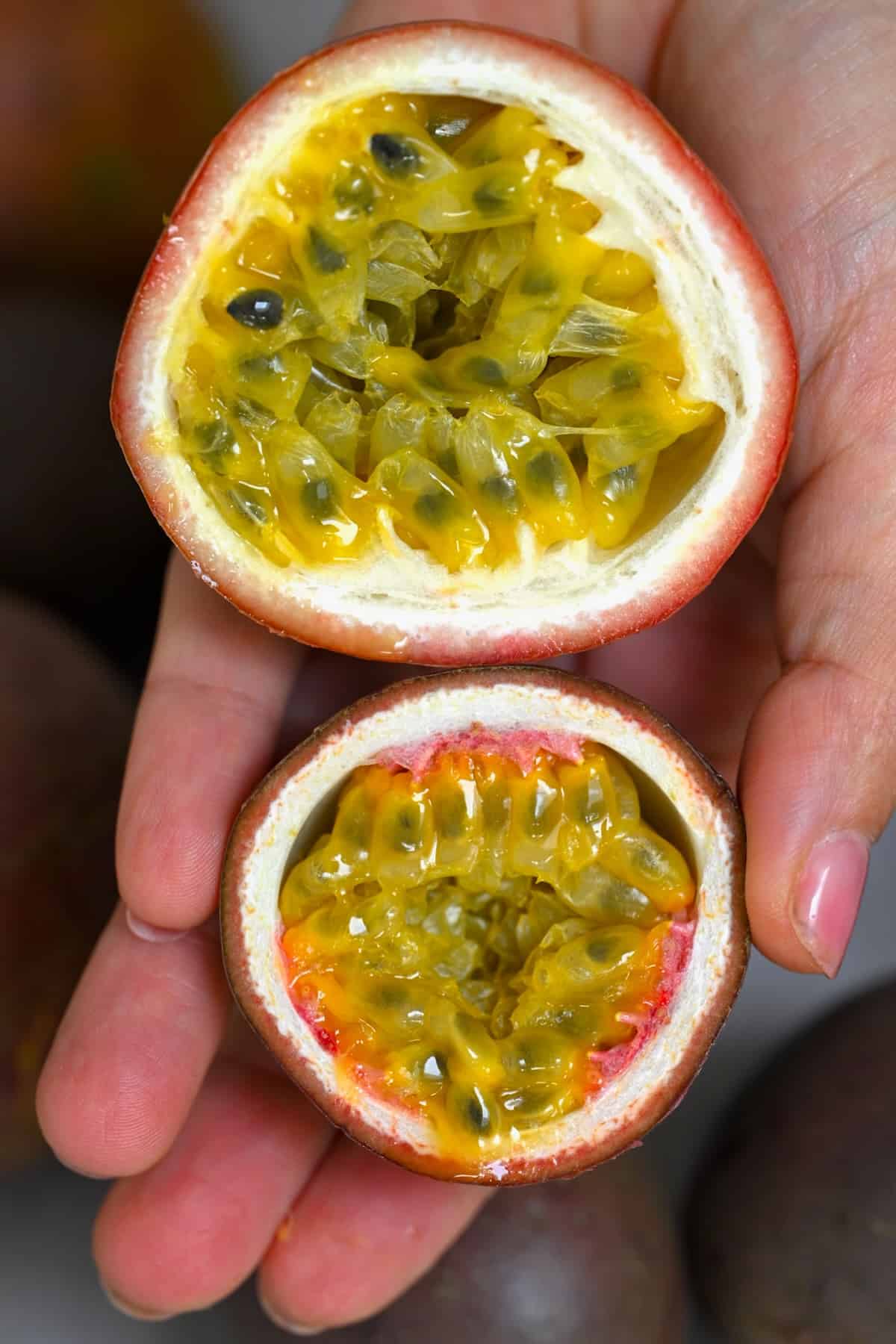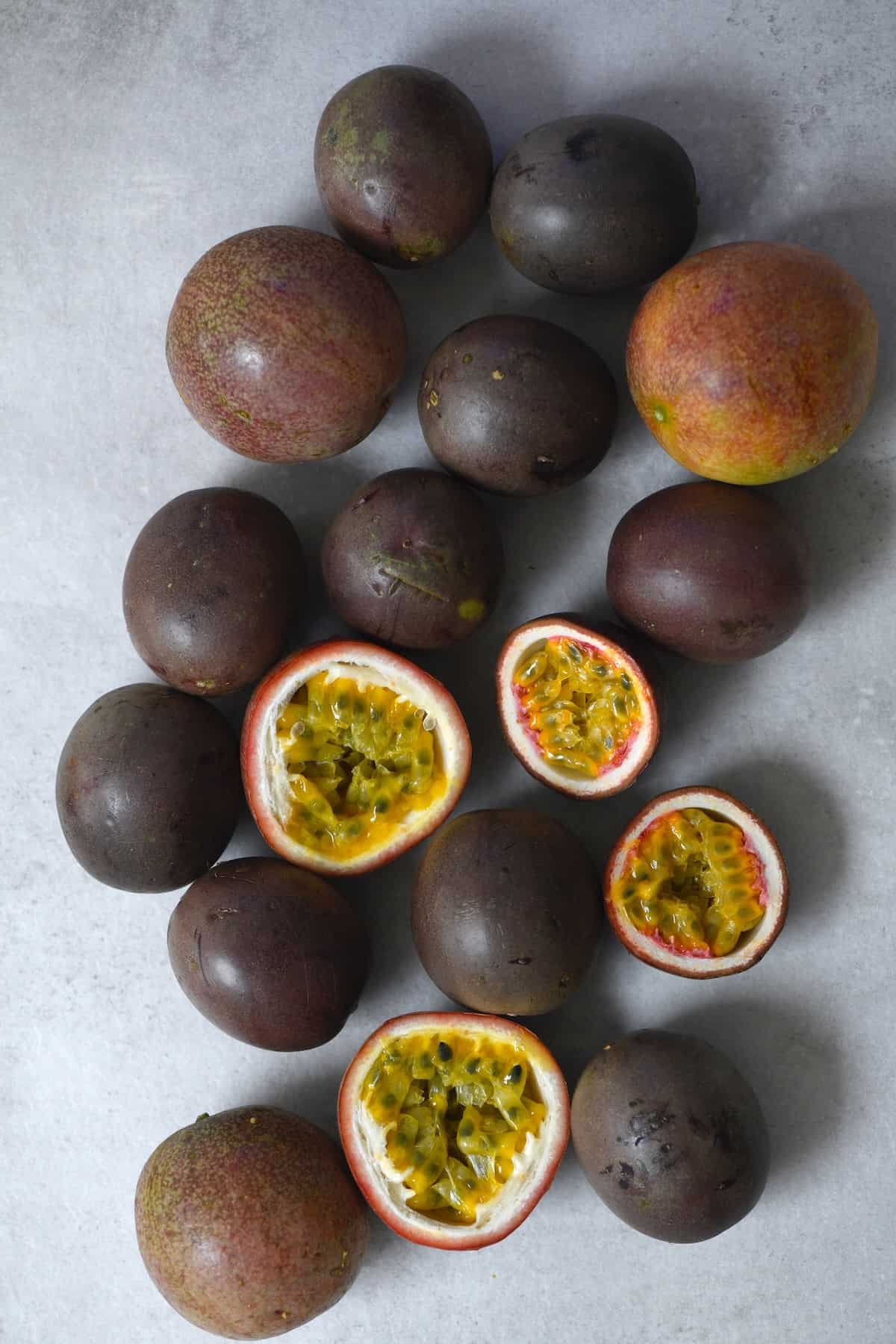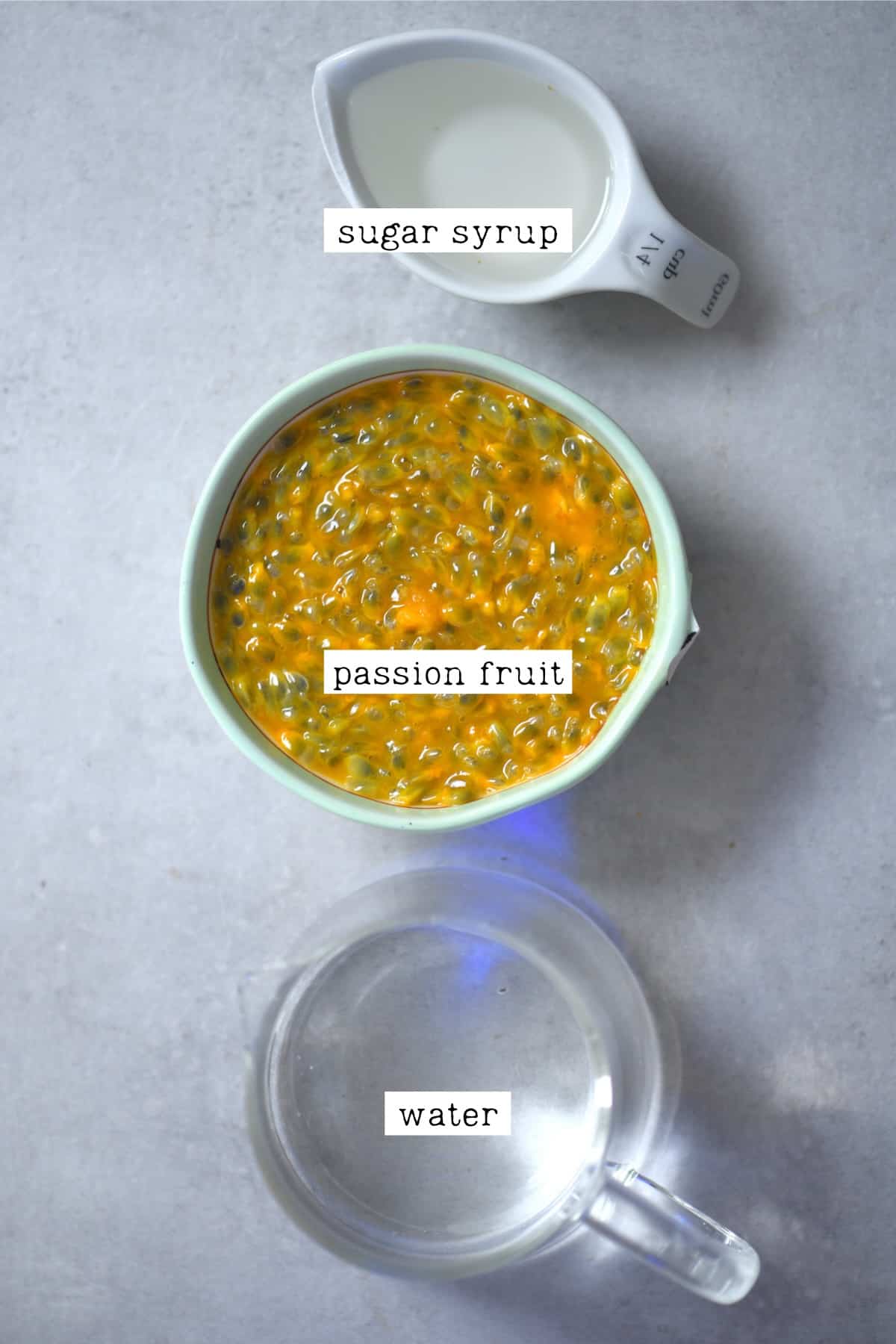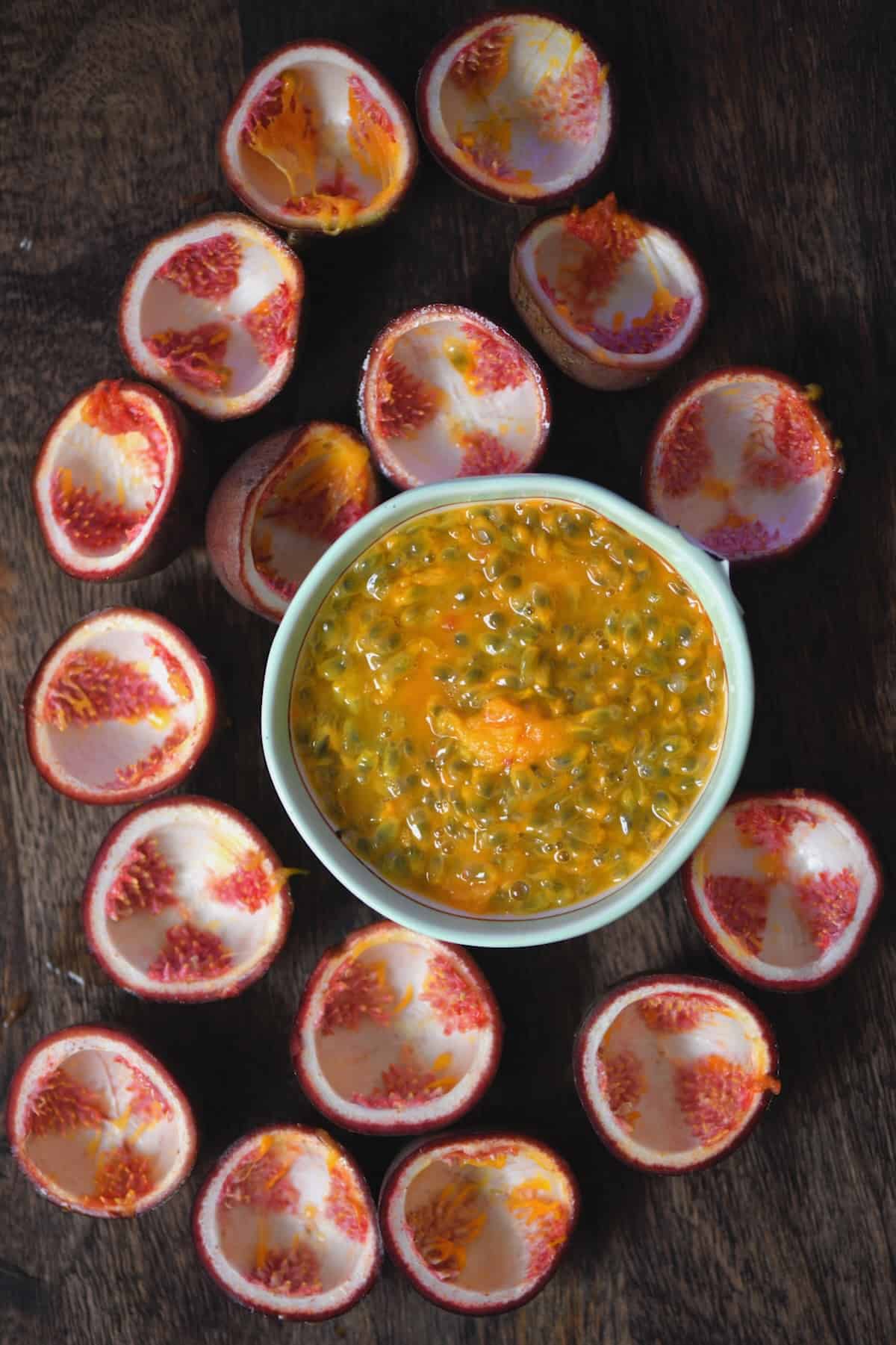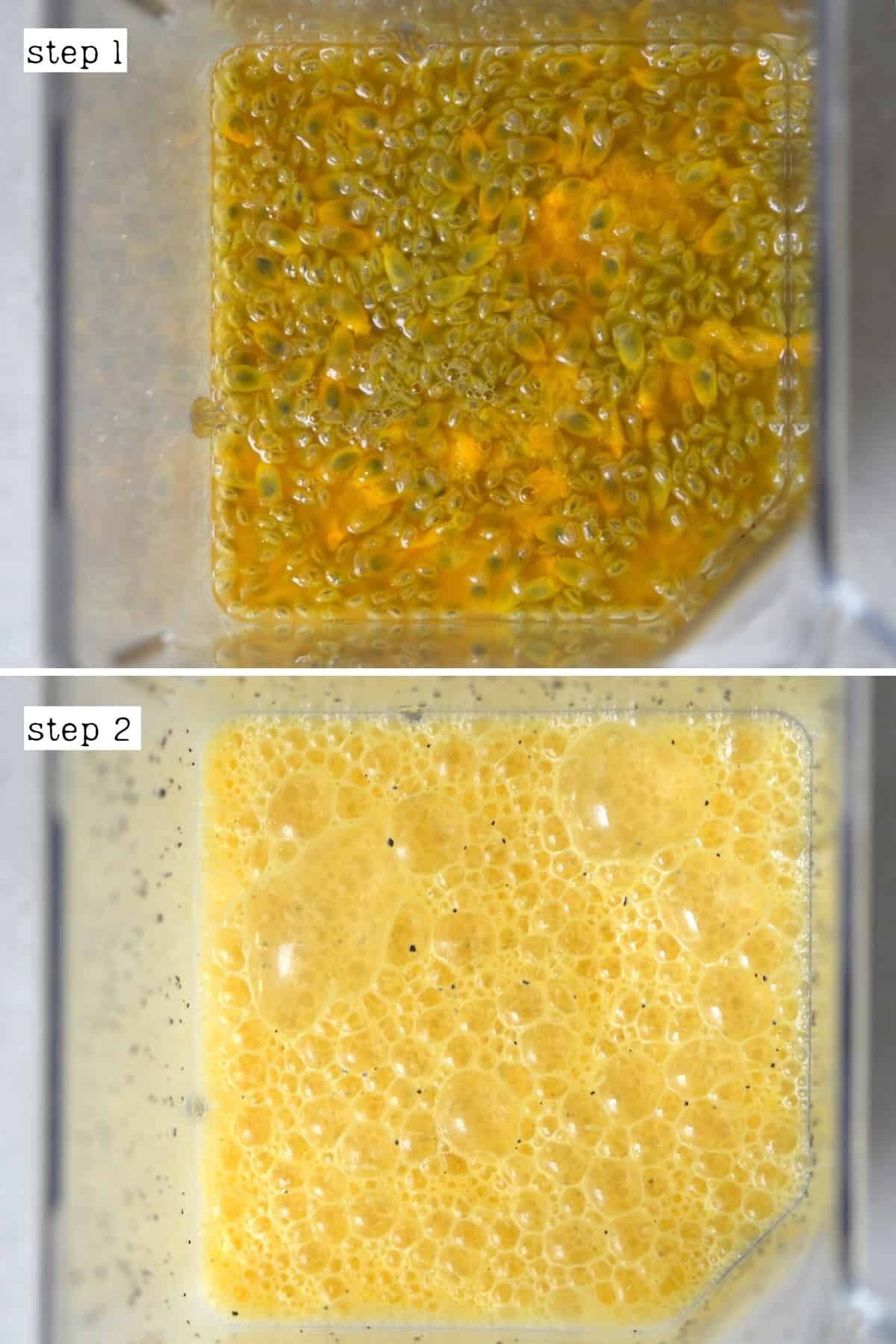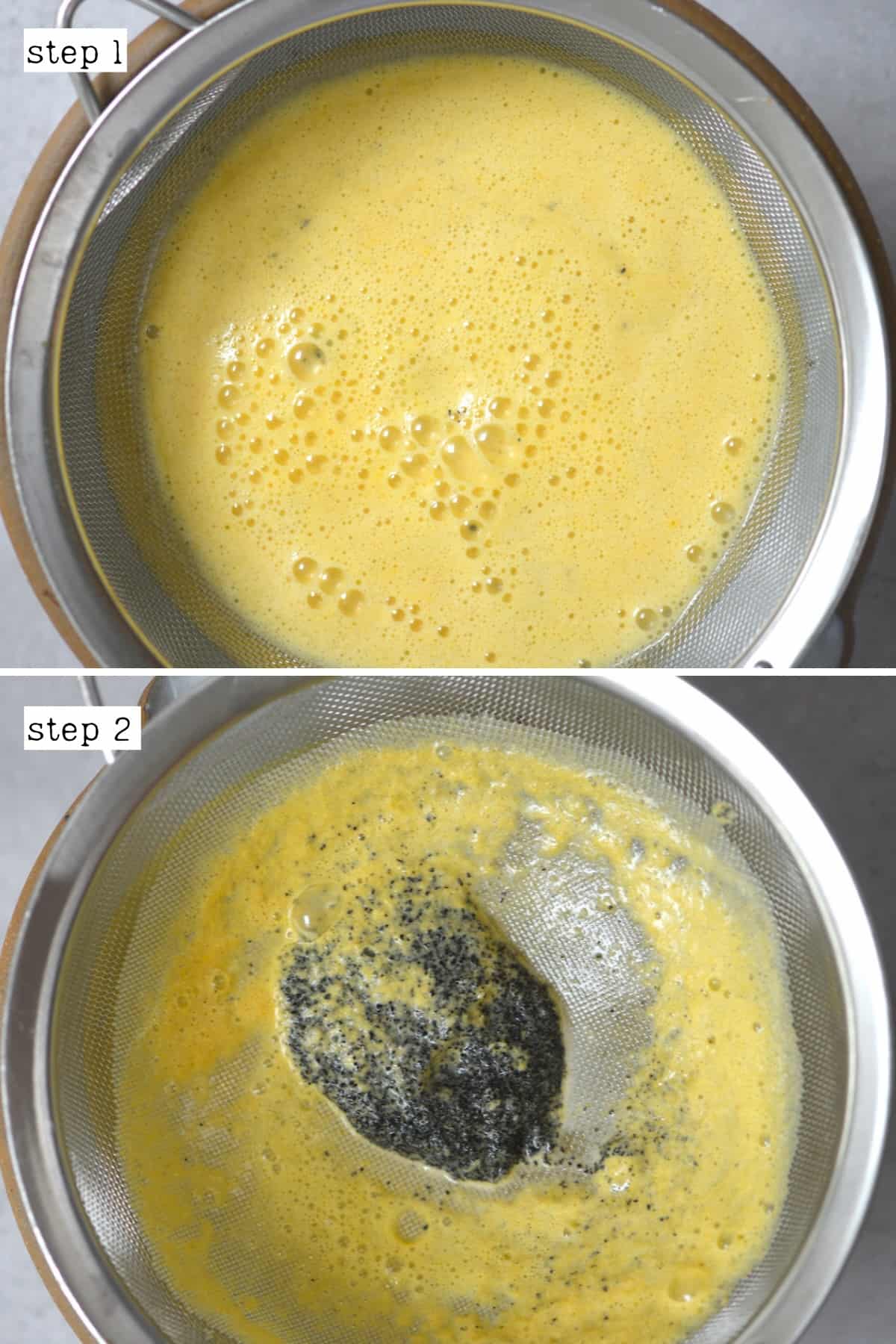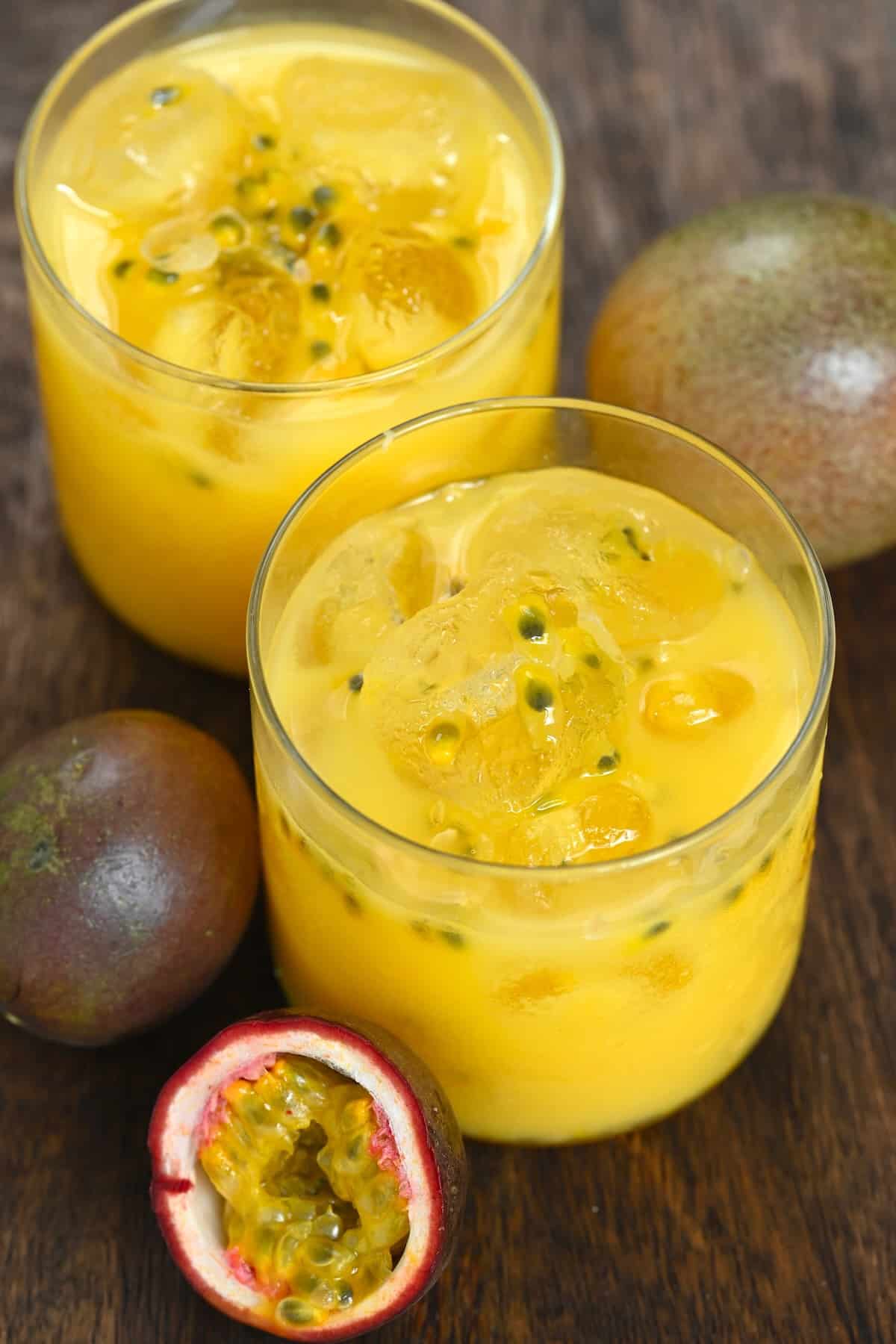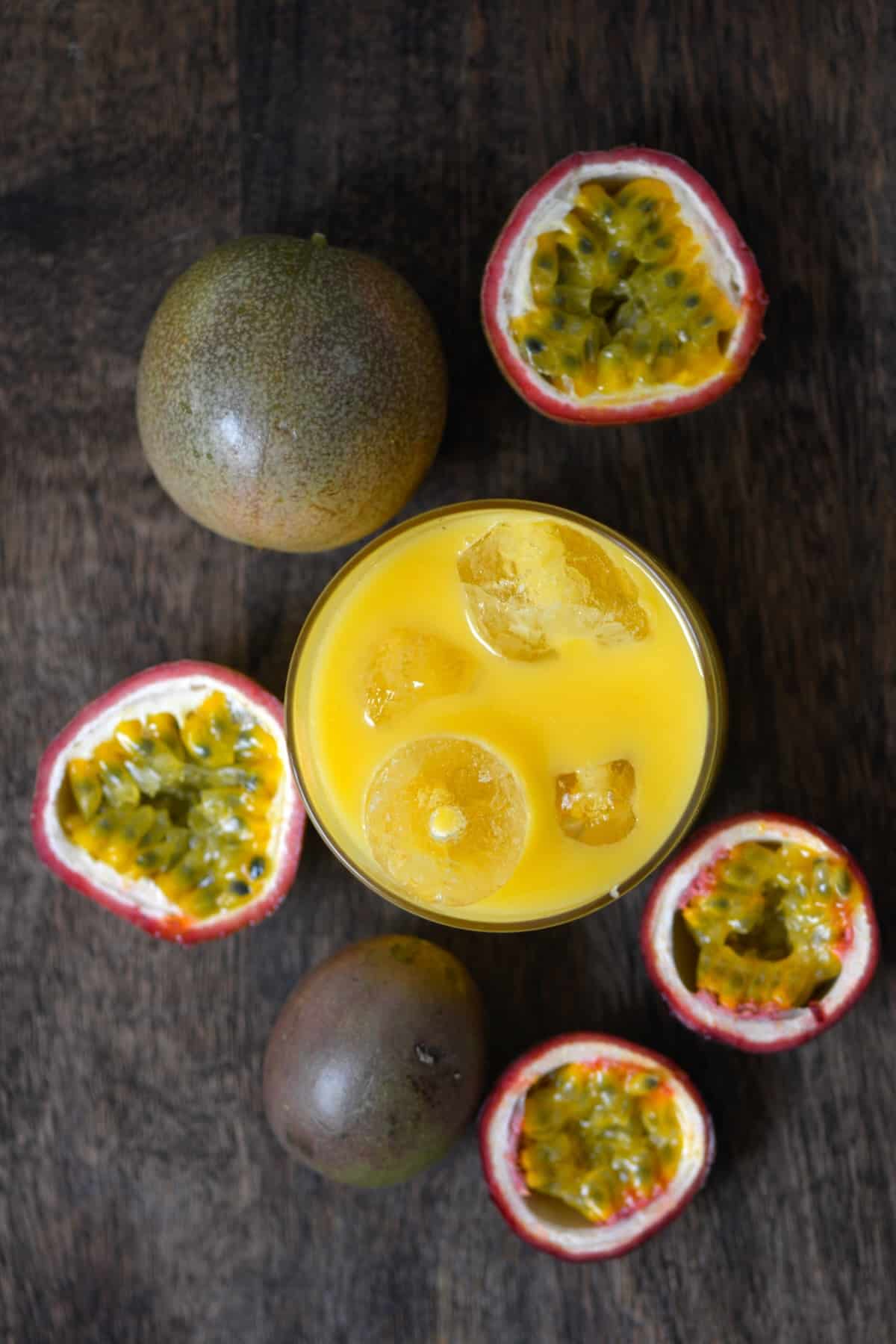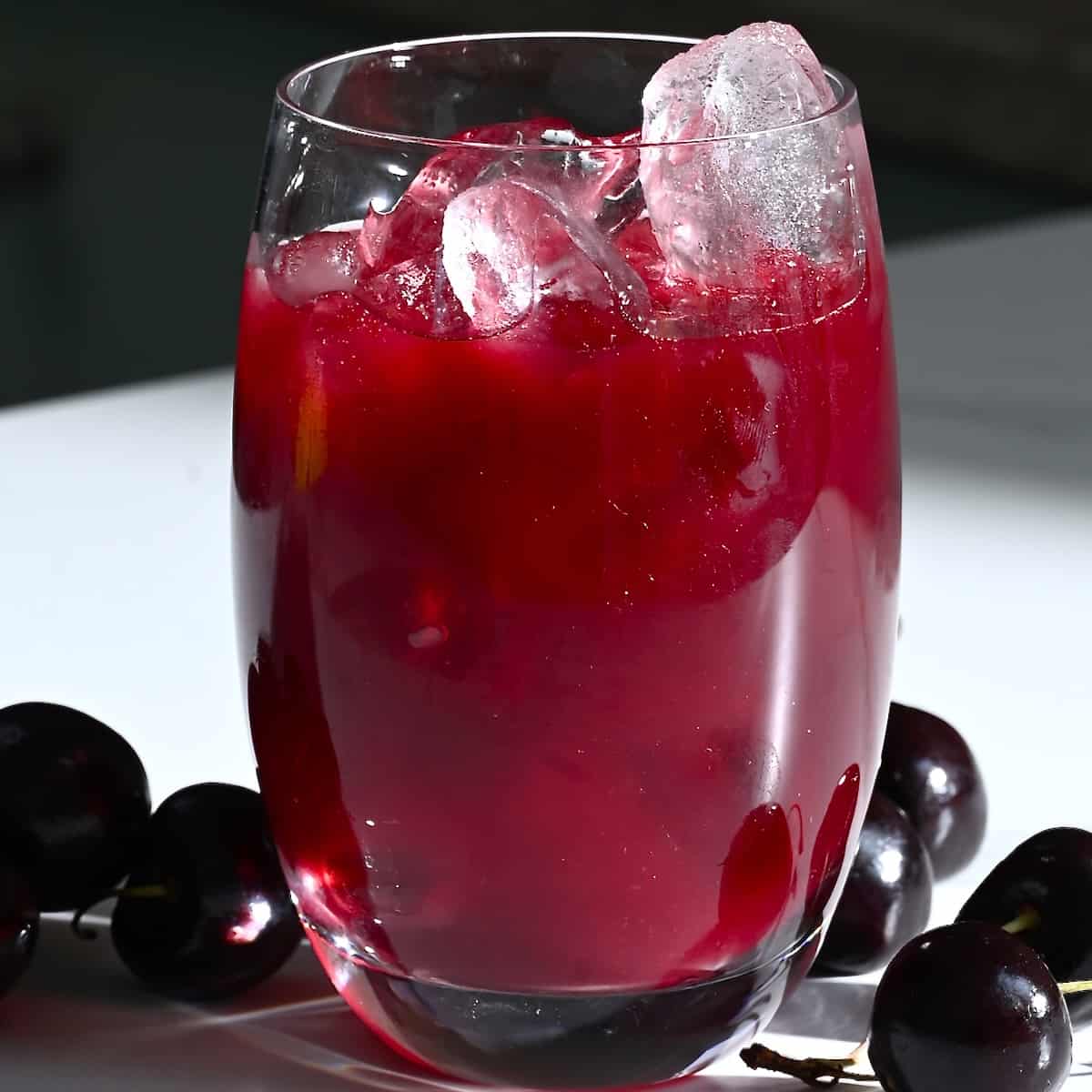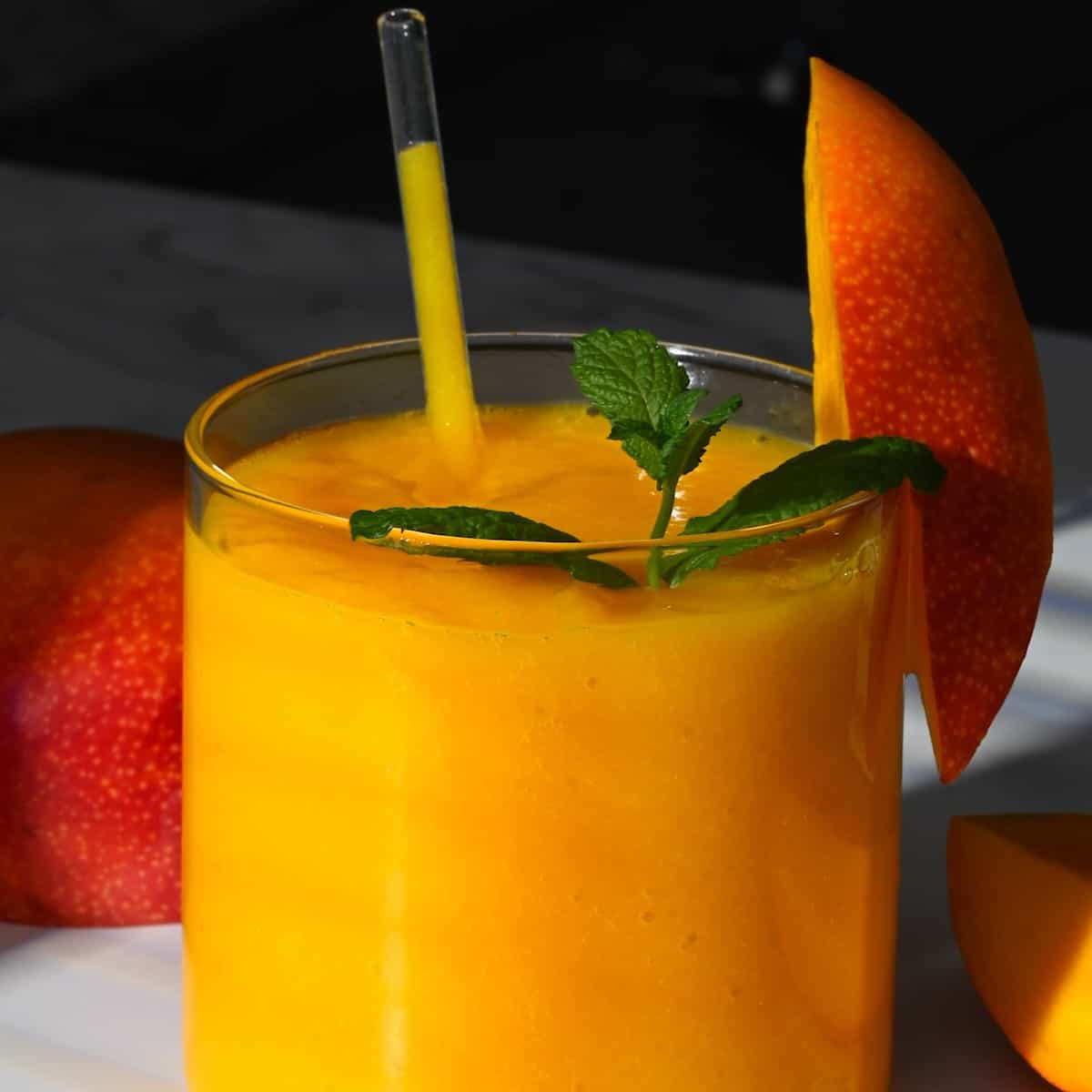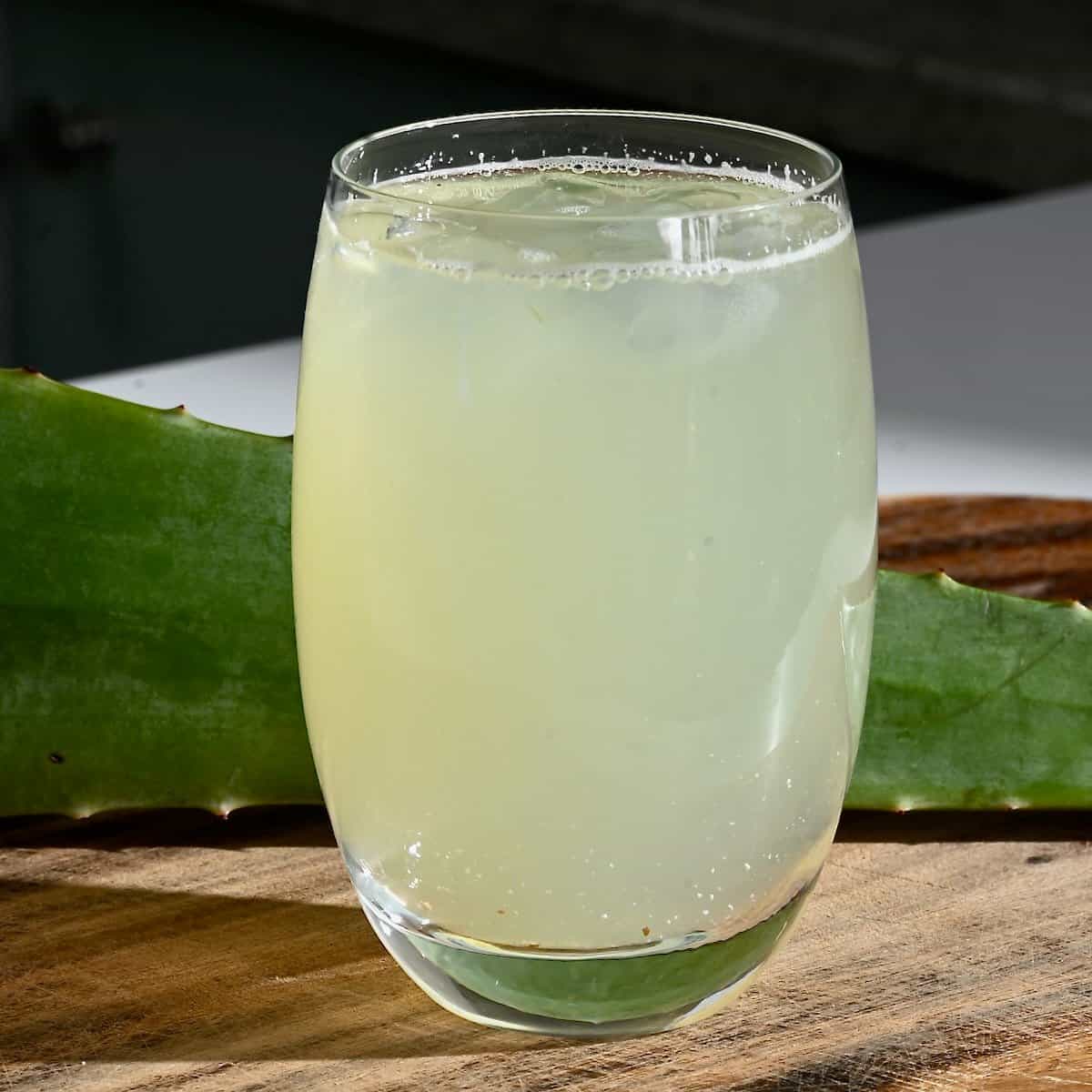Fresh-squeezed juices are a weakness of mine. I’ve been whipping up batches of pineapple juice, freshly squeezed orange juice, and apple juice for years. So I can’t go back to bottled juice “from concentrate.” I’m used to enjoying passion fruit recipes, especially desserts. And now it’s time to let its own sweet-tart flavor shine with homemade passion fruit juice. It’s perfect for hot summer days and any time you’re craving tropical flavors! This juice is really simple to prepare, with just the fruit, water, and a sweetener. Plus, there are several ways of adjusting the recipe, including extra add-ins. You are also 100% in charge of the ingredients, meaning no unwanted preservatives and excess sugar levels!
What Is Passion Fruit?
Passion fruit is the fruit that comes from a passion flower plant native to Brazil and Northern Argentina. It is grown across several tropical and subtropical countries. The fruit (technically a berry) is oval in shape. Depending on the variety, has deep purple skin (Passiflora edulis) or yellow skin (Passiflora flavicarpa). Inside is a golden-orange juicy center with a sweet-tart flavored jelly-like pulp. It also has crunchy black seeds, perfect for adding to desserts and juicing. Passion fruit is actually just one of many names this fruit it’s called. Other names include Maracuja or Maracuya (in Brazil/Ecuador), Chinola or Parchita (in Puerto Rico), Lilikoi (in Hawaii), Granadilla, and possibly others. For that reason, I’ll use the terms interchangeably below.
Is Passion Fruit Juice Good for You?
Passion fruit, though small, is packed with antioxidants, several vitamins, and plant compounds that are beneficial to overall health. Here are the top passion fruit benefits.
Passion fruit juice is an excellent source of vitamin C and vitamin A. Both antioxidants will boost the immune system, are anti-inflammatory, and improve wound healing and skin health. The antioxidants can also lower the risk of several cancers. It is rich in carotenoids and polyphenols (the latter is more so than many other tropical fruits, like pineapple, mango, banana, etc.). These are both potent antioxidants with anti-inflammatory benefits. Contains moderate levels of iron, absorbed better due to the vitamin C in the chinola juice. This is important to make hemoglobin and carry oxygen around the body. The fruit has a low glycemic index (GI) value, meaning no steep increase in blood sugars after consuming it. Maracuya juice contains potassium, which is important for heart health and the proper functioning of muscles and nerves. Contains lower levels of magnesium, calcium, phosphorus, & vitamin B6. With the seeds included, a single passion fruit contains 2 grams of fiber, which is great for digestive health. The juice contains compounds that function almost like a sedative, helping you to get a good night’s sleep and calm nervous anxiety.
Read more about the health benefits of passion fruit on Medical News Today.
Where to Buy Passion Fruit
This fruit is in season from April through to October. During that time, it is available in many major supermarkets. However, you will also be able to find it in many foreign food markets and stores, such as African, Asian, and Caribbean stores. In many countries, you can also purchase frozen passion fruit pulp or puree in-store or online. Just check the packaging to ensure it’s 100% passion fruit (no sweeteners, preservatives, etc.).
How Do You Know If a Passion Fruit Is Ripe
To choose the best passion fruit, select a large, heavy (which means plenty of pulp), firm fruit. Look for ones with a deep color (purple or yellow), avoiding any that are too green. Also, avoid fruit with bruises, tiny holes, or large soft spots, as these fruits may be moldy. If the skin is smooth, it’s likely unripe still, and if it’s too wrinkly, it’s likely overripe. The ideal level is where the skin looks dimpled all over, but not overly wrinkly. If it’s not fully ripe when purchasing it, leave it to sit at room temperature (out of direct sunlight) until it wrinkles for the sweetest passion juice.
How to Make Passion Fruit Juice
Use just fresh passion fruits, water, and sweetener (in this case, a simple syrup). Then it’s easy to learn how to juice passion fruit with or without a blender. Note, you can use purple or yellow passion fruit, though purple has the sweetest flavor. Passion Fruit Puree Vs Juice Vs Pulp Passion fruit pulp is everything you scoop out from the peel (seeds and liquid). Passion fruit puree is the liquid from the fruit after straining the seeds. Passion fruit juice (lilikoi drink/chinola juice/maracuya juice) combines the fruit puree with water and sugar into a refreshing passion fruit drink.
How to Cut Passion Fruit
Before using either of the below methods, you first need to gather the passion fruit pulp/seeds. Luckily, preparing passion fruit is very simple. First, use a sharp knife to cut it in half (width-wise). Then use a spoon to simply scoop out the flesh and seeds into a bowl (or blender). Once cut, store any open passion fruit in an airtight container in the fridge for 5-7 days.
Manual Method
It’s easy to make passion fruit juice without a blender and only a tiny amount of effort. If you don’t mind the seeds being in the juice, then skip this step entirely.
Blender Method
This method of making passionfruit juice takes even less time and effort to prepare but leaves you with more washing up. You may prefer to add just a little water and sweetener at a time. That way, you can dilute and sweeten it to your desired levels. If you blend the mixture too much, the seeds will pulverize, and it becomes trickier to strain out the bits of seed from the resulting juice. On the plus side, seeds mean more fiber! Then enjoy the passion fruit drink as is. Or serve it with ice and a few mint leaves for a super refreshing, tropical homemade juice. You can also use the juice to add to salad dressings, make it into syrup, turn it into jelly or sorbet, etc.
How Long Does Passion Fruit Juice Last in the Fridge?
For maximum nutrients, enjoy the refreshing drink immediately. However, you can store any leftovers in a covered container (like a pitcher, glass bottle, or mason jar/s) in the fridge for 4-5 days. Give it a good stir/shake before serving each time, as it can separate as it sits.
Can You Freeze Passion Fruit Juice?
Absolutely. You can store the pasion fruit juice either in Ziplock bags or ice cube trays (then transfer to freezer bags) for up to 6 months. You can then pop a few ice cubes into lemonades or a smoothie. Or thaw them first to enjoy as juice or in a cocktail.
More Fresh Juice Recipes
Cherry Juice Mango Juice Aloe Vera Juice Peach Juice (Peach Nectar) Grape Juice How to Make Cranberry Juice Lime Juice
If you try this simple homemade passion fruit juice recipe, I’d love to hear your thoughts/questions below. Also, I’d appreciate a recipe card rating below, and feel free to tag me in your recipe recreations on Instagram @Alphafoodie!





